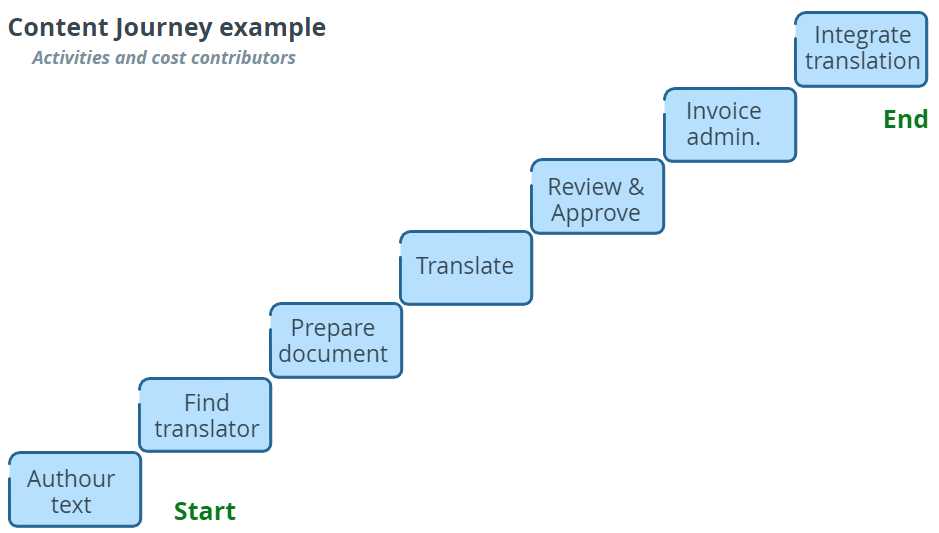Part 2: How procurement can add value throughout the content journey

In this five part series, Armand Brevig, Managing Director of Procurement Cube, offers his thoughts on how procurement professionals can maximize their impact when sourcing global translation services.
I ended my previous article in this series by saying that procurement professionals sourcing translation services must understand the end-to-end content journeys of key stakeholders. This insight will form the foundation for creating substantial strategic value, rather than merely haggling over the per word rate.
When you take a step back and look at the wider picture, not only does it become clearer where the opportunities to add value lie, it also helps you avoid the trap of sub-optimization. For example, a low negotiated per word rate could come at the expense of some other benefit, resulting in a higher total cost for your organisation.
Once you have understood the key components of the content journey, you can represent it in a Total Cost of Ownership (TCO) style diagram, like the one shown below for illustration purposes. Play it back to your stakeholder and get them to confirm and build on it. Once there is consensus about what the content journey looks like, you can jointly brainstorm ideas about where value can be added and costs taken out.

Procurement professionals would intuitively recognise spend consolidation would likely reduce the per word rate, save on invoice admin and Purchase-to-Pay (P2P) costs. But by making all the key activities associated with the content journey explicit, you also expose all the hidden costs. This in turn may raise questions such as:
- Could costs be reduced by process streamlining at the beginning of the content journey? For example, considering translation at the point when the original text is authoured would make it easier and quicker to prepare these documents for translation. It would also be easier and quicker to review and approve the finished translations, as there would be fewer revisions to make.
- Could technology reduce costs beyond what can be achieved by volume consolidation alone? For example, the right combination of Translation Memory, Machine Translation and Artificial Intelligence would reduce the number of words requiring human translation, thereby reducing total costs even at constant per word rates.
- Could costs be reduced by process streamlining at the end of the content journey? For example, a more suitable format of the finished translation text may make integration of the text easier and quicker.
Having identified additional opportunities for optimization, like the ones mentioned above, you can now explore supplier capabilities in those areas during the Request for Proposal (RFP) phase. However, you also need to look for signs that the supplier is an entity you would be able to build an excellent relationship with. As I point out in my conversation with Jane Freeman (video below), the better the relationship with your translation services vendor, the more successfully you will be in reducing these hidden costs.
Visit How to Buy Translation Services for more information, and read Part 3 in the series where we look at the reasons why spend visibility is critical when sourcing translation services. And if you'd like to learn more about this topic, why not watch RWS's Jane Freeman interview Armand, where they discuss best practices to help you avoid costly mistakes.

